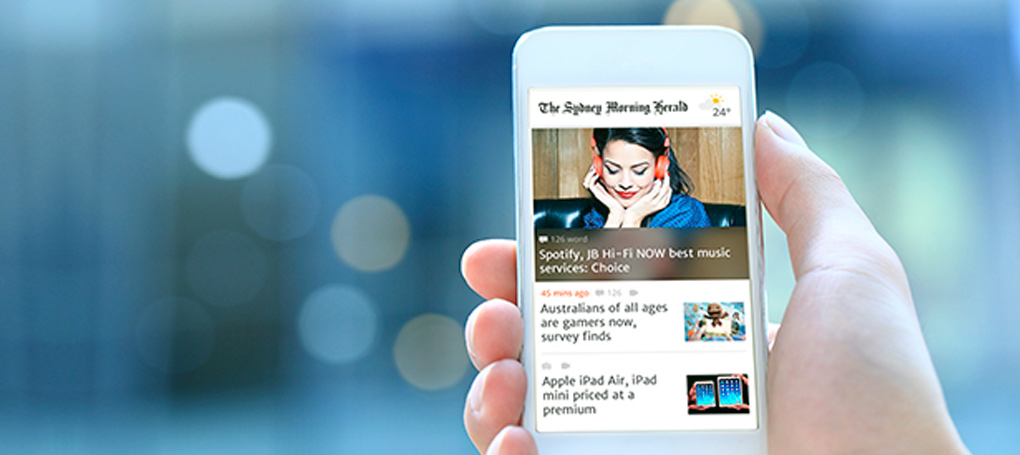- Home
- Fairfax Media focuses on usage trends to mould smartphone strategy

Fairfax Media focuses on usage trends to mould smartphone strategy
December 4, 2013
Freemium model, careful attention to consumer media habits, and agility are all key parts of Fairfax’s mobile plan — a plan that certainly includes generating revenue along the way.
Publishers are already wise to the opportunities of capturing considerable market share from mobile. At Fairfax, for example, we’ve had 1.2 million downloads for our three iPad apps (Sydney Morning Herald, The Age, and Canberra Times) since we launched them three years ago.
We began using a freemium subscription model for news on July 2, one that was adopted internationally two months earlier. We hope to see both subscription and advertising revenues from our smartphone strategy. We have a place for every type of reader — full subscription and levels short of that.
In these very early days, it’s been fantastic.
As we planned our smartphone strategy, we carefully considered usage trends to make the most of the smartphone opportunity. For many people in Australia, the last thing you do at night is look at your mobile phone. Some people even use it in bed or in the shower. They look at it many times an hour.
So we’re trying to legitimately insert ourselves into the most mobile hours, make the most of them, and legitimise the organisation as a publisher.
We want to meet their needs.
Mobile initiates a consumer shift. I believe there will be multiple avenues for connecting in the future.
Digital subscriptions represent a significant shift in how news companies do business, and that’s where Fairfax Media has been focused. The model, though, will be adjusted for all types of users as the next generation of products comes of age.
The details remain unclear, as there is still much work to be done.
Fairfax has considered responsive design technology — and continues to do so. We don’t have a lot of experience with it, but we will have a good crack at it. It’s not a silver bullet, though, as it’s quite tricky to get right.
Questions also remain about the number of formats to be considered. If you must change content, then why simply adopt one layout? Our tablet product is a very different experience to that of the mobile phone and the desktop. Actually, I believe you’re better off with two products in the end.
But for some, a simple response to screen size may be sufficient or preferable. And that approach helps to keep brand appearance the same, platform to platform.
The audience shift is really about audience and device fragmentation. We must properly target editorial and advertising content. We can personalise, target a time of day, an expressed interest, or a location, but we must make sure we’re absolutely relevant and top of mind for them.
We must increase relevance and utility. Useful content is often stickier than straightforward news. We need both for people to keep coming back and staying when they do.
Location-based advertising looks intriguing, yet publishers must figure out how to monetise it before too much energy goes in that direction. We certainly have had a good, strong look at it. There are some concerns over measurement and advertiser understanding, interest, and need.
We must also determine whether location can be passed along to the advertiser due to device or carrier restrictions, as we certainly can’t use that information carte blanche.
Yes, mobile absolutely can be an important source of revenue for media companies. But it’s still in its infancy. Publishers must explore what’s beyond mobile-first thinking to ensure suitable hygiene levels, such as measurement, to create a model that will help advertisers.
Now is the time to get some of those base measures in place.
This is one of 17 case studies featured in the recent INMA strategic report “The Smartphone Choices for Media Companies.” For more information on this report, free to INMA members, click here.
Stefan Savva
Mobile Director - Fairfax Media
As Mobile Director at Fairfax Media Stefan is responsible for the mobile strategy and direction for more than 50 market-leading mobile and tablet assets including the award winning SMH and AGE m-sites and tablet apps. Stefan’s role spans product vision and strategy, mobile insights, audience growth, design and leadership of the mobile product and technology teams.
